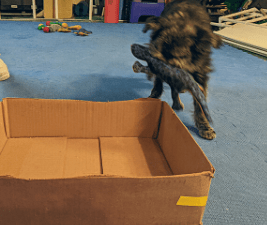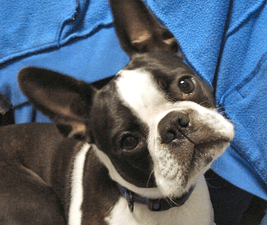We have a friend who makes us crazy. She’s constantly putting limits on her dogs. “He’s a French Bulldog, so he’s not a real dog.” “We can’t ask for too much in obedience – he’s a Frenchie.” She also has Border Collies, and we understand the two breeds are vastly different. But it’s not fair, not right, and not good to put limits on our dogs. Let them show us what they can and can’t do!
Reasons for limits
There are all kinds of reasons that dogs may have limits. They could be age, size, or breed related. But how do you know until you try?
It’s happened a couple of times with our own dogs. Tango, at almost 13, is certainly considered a senior dog. He doesn’t see all that well, especially in bright light. But he still gets his turn every morning when we play 2-Minute-Dog-Training Games with all our pups.
Between his age and lack of vision, there have been times when we proposed a new game or trick and Fran was, to say the least, skeptical of trying it with Tango. She was wrong to doubt him for even a minute. We may have had to put bright yellow tape on the box for him to find his toy box, but he puts his toys away. He might not get his huge yellow chicken in the bucket on the first try, but he does it.
At least give it a try
Hope’s French Bulldog Torque loves doing Obedience and Rally exercises. And Hope expects his execution of every single exercise to be as perfect as the rule book specifies. It doesn’t mean that he’ll be perfect in competition, but it means we don’t “settle” because of his breed. If you don’t care, your dog won’t either. We find ways to make every single session fun for both of us. And getting our dogs to understand what’s “right” is our job – and our joy.
It’s really exciting and fun when your dog learns something new or tries something different. Maybe your little dog really can’t go on a mile-long walk right now. But if you start small and increase the distance a little bit every day, maybe someday soon they will! Putting limits on dogs is a guarantee they won’t succeed.
Let your dog lead
Our friend with the Frenchies and Border Collies posted a video with the BCs chasing around a huge field, running, fetching, chasing each other and having fun. And in her comment on that video was the one that Frenchies aren’t real dogs, so weren’t allowed to play that way.
She’s putting limits on her dogs without reason. Maybe they wouldn’t want to play chase and fetch. But how does she know unless she tries?












